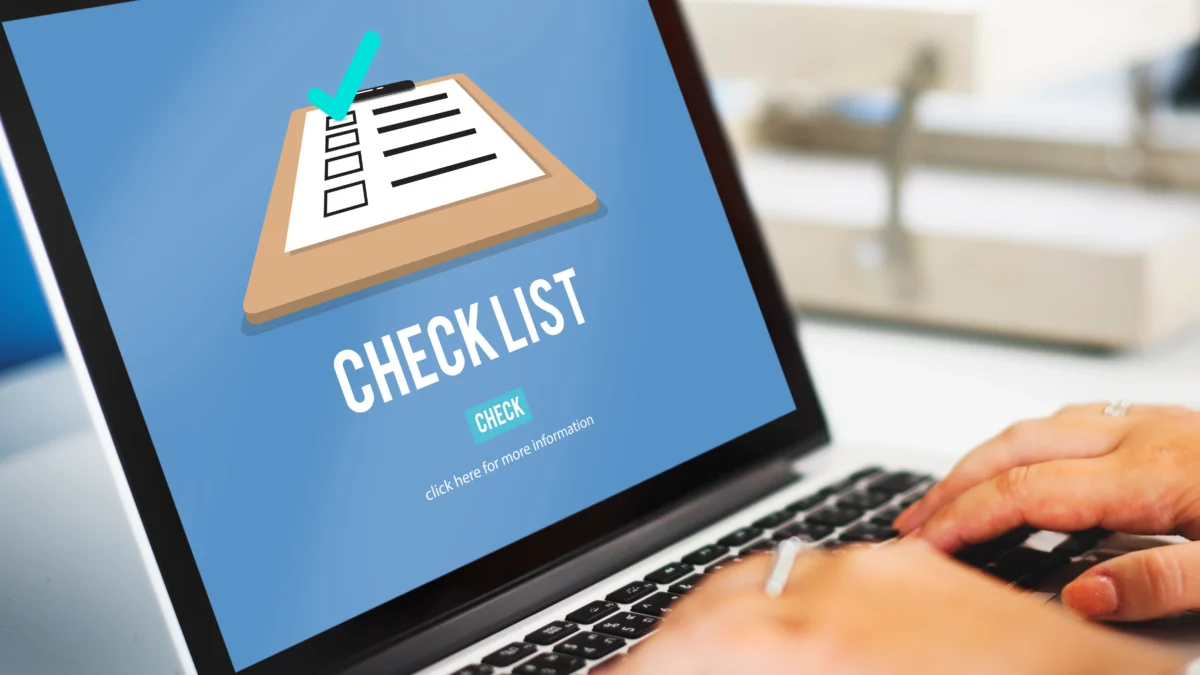Cybersecurity has become a critical management priority for any organisation.
The rise in ransomware attacks, email fraud and data breaches is forcing leadership teams to assess whether their company is truly prepared.
This executive checklist allows you to evaluate, in just a few minutes, your organisation’s security posture and identify the areas that require immediate action.
You will also discover how a specialised partner such as Inmove IT Solutions can help strengthen your digital environment with key services like perimeter security, corporate antivirus solutions or 24/7 monitoring.
Why a cybersecurity checklist is essential in 2026
Threats have become increasingly sophisticated, and many companies still rely on basic measures that are no longer sufficient.
The purpose of this checklist is to provide leadership with a clear tool to validate whether their IT infrastructure meets the recommended minimum standards and, above all, whether the organisation is effectively reducing the real risk of disruptions, data loss or external attacks.
Executive cybersecurity checklist for 2026
This checklist is structured into key areas that every management team should review.
It is written in clear, accessible language while offering enough detail for your IT team to validate each point.
1. Perimeter protection and network security
Before delegating to your technical team, ensure that these fundamental elements are in place.
A network with no segmentation or advanced firewalls poses a direct risk to any organisation.
- Next-generation firewall correctly configured (IPS, web filtering, network antivirus).
- VLAN segmentation to separate departments and critical services.
- Secure VPN for remote access with strong authentication.
- Regular review of firewall rules and policies.
- Active monitoring of suspicious traffic and intrusion detection.
If your company does not yet have this protection layer, consider implementing solutions such as Inmove IT Solutions’ enterprise perimeter security.
2. Endpoint and server security
Many attacks originate from poorly protected devices.
This section helps you verify whether your company has a consistent protection strategy for workstations and servers.
- Centralised corporate antivirus with automatic updates.
- Advanced antispam protection for all mailboxes.
- Regular patching of operating systems and critical applications.
- Mobile Device Management (MDM) to control external access to corporate systems.
- Privilege management to prevent misuse of administrative accounts.
If your organisation lacks professional-grade protection, consider reviewing the corporate antivirus and antispam service.
3. Identity, access control and MFA
Attackers frequently exploit weak access controls or compromised passwords.
An identity-driven model with multi-factor authentication is now indispensable.
- Multi-factor authentication (MFA) for email, VPN and critical applications.
- Strong password policies with mandatory periodic renewals.
- Quarterly review of user permissions.
- Immediate deactivation of accounts belonging to former employees.
- Audit logs enabled on key platforms to track access activity.
4. Backup and recovery
No cybersecurity strategy is effective without a recovery plan.
Without verified backups, a company is fully exposed to the consequences of a major incident.
- Automated backups stored separately from the primary server.
- Hybrid cloud replication or a combined local + cloud approach.
- Restoration tests performed at least once per month.
- Encrypted storage with restricted access to backup data.
- Documented recovery plan for cyberattacks or technical disasters.
To reinforce this area, consider solutions for remote storage and enterprise backup.
5. 24/7 monitoring and incident response
Early detection is crucial to preventing major damage.
A system without monitoring is practically working “blind”.
- Real-time monitoring of servers, networks and applications.
- Automatic alerts for failures, suspicious access or consumption spikes.
- Log analysis and security event correlation.
- Regular status reports and improvement recommendations.
- Dedicated team with defined procedures for responding to critical incidents.
If this area is not fully covered, consider the 24/7 IT monitoring service.
6. Staff training and awareness
Human error remains the primary cause of most security incidents.
Management must ensure the existence of clear internal policies aimed at reducing mistakes.
- Annual phishing and security awareness training for all employees.
- Internal phishing simulations to assess risk levels.
- Clear protocols for managing suspicious emails and attachments.
- Internal policy for device use, remote access and storage.
- Confidentiality and data protection agreements signed by all staff.
Organisations such as INCIBE offer reference guides and resources that can complement internal awareness programmes.
7. Continuous auditing and ongoing review
Without periodic review, no organisation can guarantee its level of cybersecurity maturity.
It is essential to obtain an external, objective view of the real state of the infrastructure.
- Annual audit of systems, networks and security policies.
- Review of access policies, permissions and privileged accounts.
- Risk assessment with an updated action plan and prioritised tasks.
- Complete, up-to-date inventory of IT assets and critical applications.
- Annual executive report with risks, impact and improvement proposals.
If you do not have regular audits in place, consider relying on IT and security auditing services.
How management should interpret the checklist
The goal is not for you to review every point from a technical perspective, but rather to ask your IT team or provider one key question:
“How many of these items do we comply with today, and what level of risk do we accept for those we do not?”
A company that meets less than 70% of this checklist is exposed to serious risks such as:
- Unexpected production outages and productivity loss.
- Loss or encryption of critical business data.
- Fines for GDPR and data protection non-compliance.
- Email fraud and identity impersonation (BEC, advanced phishing).
- System lockouts caused by ransomware attacks.
Practical example: direct impact on an SME
An industrial company in Barcelona suffered a cyberattack through a phishing email that bypassed their outdated antivirus.
Their network was not segmented and MFA was not enabled on Microsoft 365.
The attacker encrypted their servers and halted operations for two days, causing losses exceeding €12,000.
After implementing:
- Next-generation firewall with revised policies.
- Centralised corporate antivirus and advanced antispam.
- MFA for email, VPN and business applications.
- 24/7 monitoring and security log review.
The company significantly reduced its exposure to risk, improved response times and achieved a far more resilient infrastructure against future attacks.
Frequently asked questions about the cybersecurity checklist
How often should this checklist be reviewed?
A quarterly review is recommended, as threats evolve rapidly and organisations need continuous oversight of their security posture.
Should management or the IT department lead the process?
Ideally, management should drive the review and set business priorities,
while the IT department validates each point with evidence, metrics and a clear action plan.
What if my organisation does not meet several critical points?
You should consider immediate action.
Next-generation firewalls, MFA, verified backups and 24/7 monitoring are the measures that most effectively reduce the risk of a major incident in the short term.
How can Inmove IT Solutions help?
With services such as perimeter security, corporate antivirus for SMEs, 24/7 infrastructure monitoring and IT auditing and security assessments, we help organisations identify vulnerabilities, prioritise investments and strengthen their environment without disrupting day-to-day operations.
Conclusion and next steps
If your organisation complies with less than 80% of this checklist, you are taking on a level of risk that could result in significant financial and reputational damage during 2026.
At Inmove IT Solutions, we can help reinforce your digital environment with a personalised action plan.
Get in touch with our team to assess your current situation, prioritise the most urgent measures and move towards a cybersecurity strategy aligned with your business objectives.

